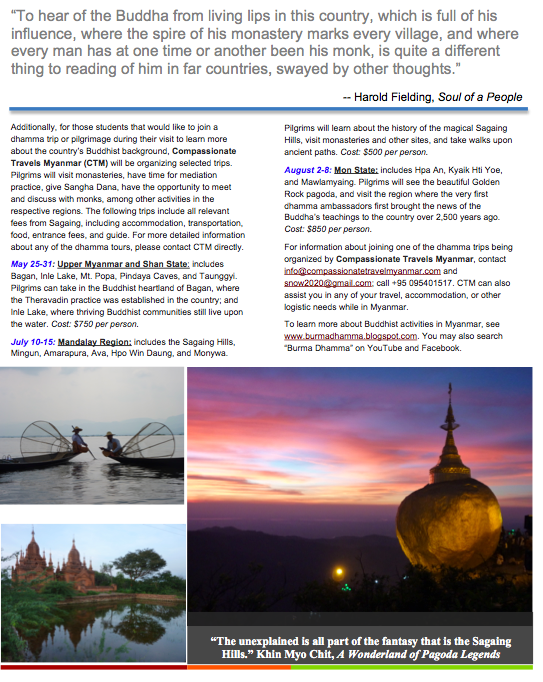 |
| A view of the magical Sagaing Hills, resting on the Ayeyarwaddy, across from Mandalay. |
New Zealander yogis Bruce and Marion Forbes brought their two children to Myanmar in 2012. In the following passage, they share about their deep connection with the Sagaing Hills:
"We had heard about Sagaing from one of our meditator friends, Karen. She had described it as 'Fairyland' because of the numerous golden-spired pagodas in the hills. She had spent a very special time there, meditating in a cave. We knew that it was home to 6000 monks and was believed to be the place where Vipassana Meditation was kept alive over the centuries. My husband had also visited Sagaing 5 years earlier and had made friends with an trishaw driver, Maung Htay and a monk called Panna Sami, so we were all eager to visit. We spent a few days in Sagaing visiting friends, walking in the hills, taking in the sights, visiting monasteries and meeting the monks and nuns. After a few days, we visited Pyin Oo Lwin, a cool hill station which had been the summer capital of British Burma in a bygone era. Though picturesque, we found that we were missing Sagaing, so we returned for a few more days. Our days in Sagaing flowed so well. We had many wonderful experiences and our family felt so welcome, especially at the monasteries. Staying in Sagaing was the highlight of our trip in both Myanmar and India."
 |
| Two novices sit at the base of a stupa in the Sagaing Hills |

































